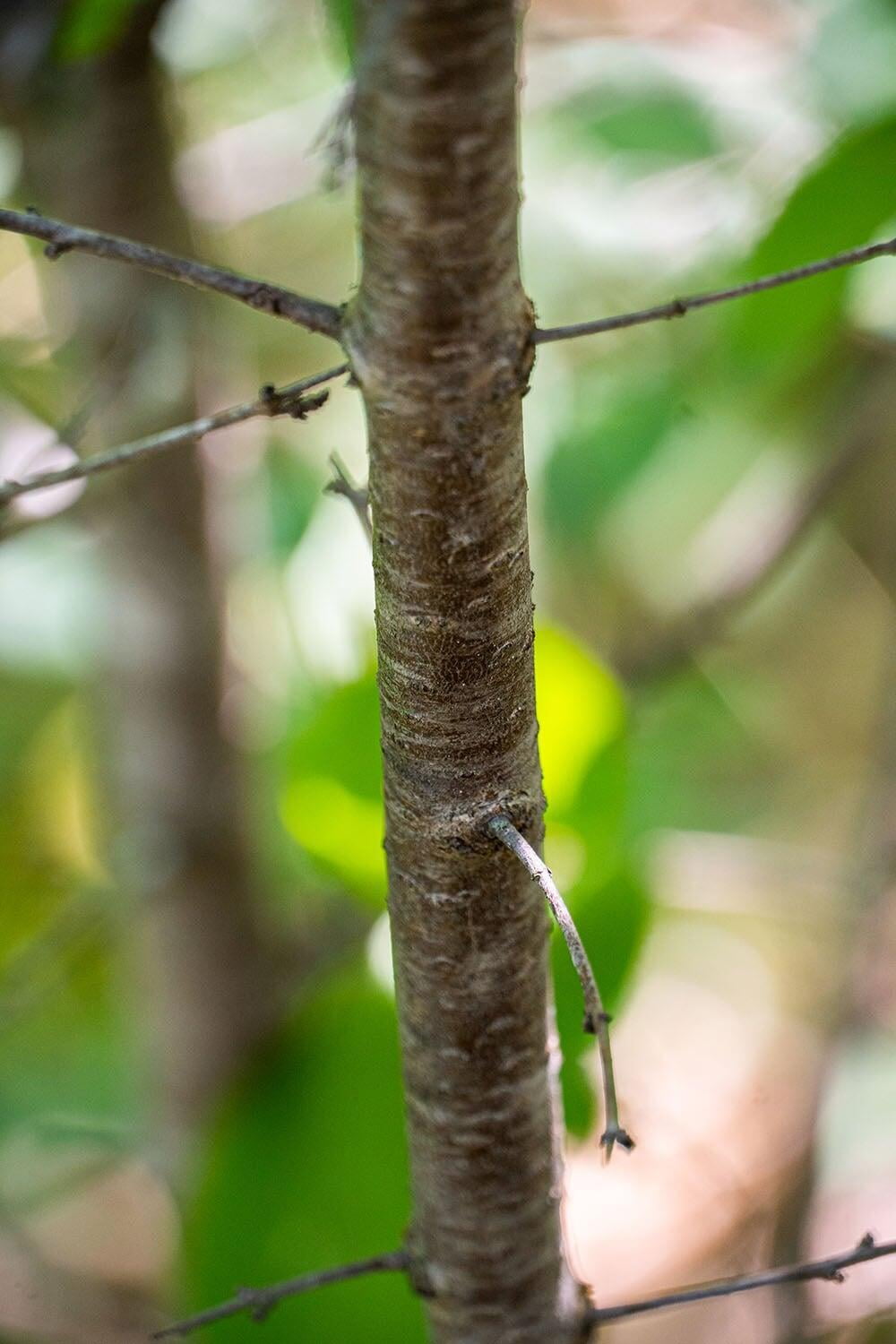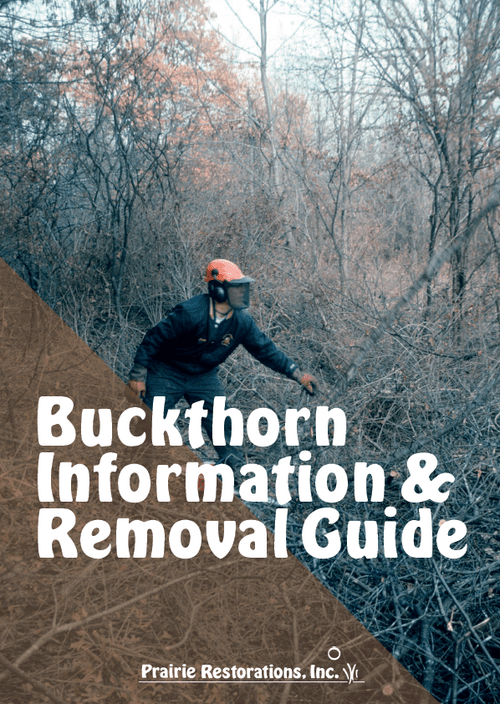Buckthorn Removal
Common Buckthorn (Rhamnus cathartica) and Glossy Buckthorn (Frangula alnus) are woody shrubs or small trees that are native to Europe and Asia. Buckthorn was introduced to North America in the early 1800s as an ornamental plant, and it has since spread aggressively across the continent. Buckthorn can now be found in nearly every state and province, where it invades both forest and prairie habitats.
Removing buckthorn is important for the health of forest and prairie ecosystems. buckthorn invades these habitats by outcompeting native plants for light, water, and nutrients. This can alter the structure of the landscape and reduce biodiversity. In addition, buckthorn alters soil chemistry, which can further damage native plant communities. Removal of buckthorn is therefore essential for restoring native plant communities and maintaining ecosystem health.

What is Buckthorn?
Common Buckthorn (Rhamnus cathartica) and Glossy Buckthorn (Frangula alnus) are woody shrubs or small trees that are native to Europe and Asia. Buckthorn was introduced to North America in the early 1800s as an ornamental plant, and it has since spread aggressively across the continent. Buckthorn can now be found in nearly every state and province, where it invades both forest and prairie habitats.
Buckthorn is particularly problematic because it can grow in a wide range of conditions, from full sun to deep shade. It also produces a large number of seeds that are spread by birds and other animals. Because of its high level of seed production and its ability to outcompete native plants, buckthorn is considered to be one of the most invasive species in North America.
Removing buckthorn is important for the health of forest and prairie ecosystems. buckthorn invades these habitats by outcompeting native plants for light, water, and nutrients. This can alter the structure of the landscape and reduce biodiversity. In addition, buckthorn alters soil chemistry, which can further damage native plant communities. Removal of buckthorn is therefore essential for restoring native plant communities and maintaining ecosystem health.
Identifying Buckthorn.
To identify Common buckthorn, look for single and multiple stem trunks
that are dark gray to nearly black with a smooth shiny surface that becomes scaly with age. The leaves are mostly opposite generally egg shaped. The edges have small, rounded teeth and the surface is sparsely hairy with 3 or 4 lateral veins.
To identify Glossy buckthorn, look for single and multiple stem trunks
that are dusky to dark gray with patches of lighter gray. The leaves





Benefits of Buckthorn Removal


